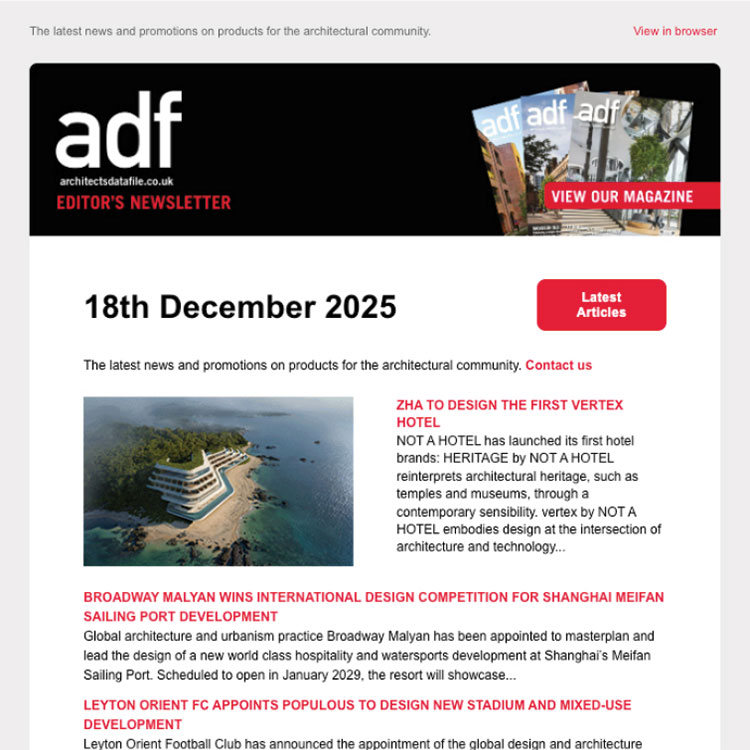Wayne Chissell, Technical Director at WestWood explains how liquid-applied membranes can maximise efficiency, durability and aesthetics for balcony projects.
As an integral part of a building’s façade, a balcony has both architectural and functional purposes. Exposed to the elements and in many cases, foot traffic, a balcony must be highly durable while offering an aesthetic appearance that complements interior and exterior spaces.
The waterproofing system plays a crucial role in achieving these aims for both refurbishment projects and new constructions. Choosing a liquid-applied membrane ensures a robust solution that can be easily installed in confined areas, including around details such as railings and upstands. Providing protection from chemicals, UV radiation, heat and water ponding, the technology can also be used to create a skid inhibiting finish as well as different colours, styles and patterns.
PMMA Benefits
Liquid-applied membranes are available in a variety of chemistries with Polymethyl Methacrylate (PMMA) one of the most popular for balconies.
Cold applied, a PMMA-based liquid resin is compatible with most substrates. The liquid is mixed with a peroxide catalyst or activator on site to trigger the curing process. For balcony applications, the build up would comprise of a primer, a reinforced waterproofing system and a self-levelling mortar. This creates an ultra-smooth surface prior to the installation of finishing layers that can create many different textures, colours and designs.
Compared to other liquid technologies, PMMA is one of the fastest curing making it ideal for balcony refurbishments in large, occupied buildings such as social housing developments. The process can take as little as 15- 20 minutes even at sub-zero temperatures, minimising disruption for residents and reducing the need for temporary access.
When installed correctly by an approved contractor, the PMMA build-up offers a long-lasting solution guaranteed for up to 25 years. The chemical structure of PMMA means it is free from plasticisers and has a high tensile strength and elasticity. This ensures the membrane can withstand structural and thermal movements and is highly resistant to UV radiation.
Design Flexibility
To enhance aesthetics, PMMA can be matched to any RAL colour and a variety of special finishes created.
As part of the system build up, coloured chips or quartz sand can be added to the wearing layer. These decorative finishes also provide greater slip resistance. Thanks to the vast colour options that can be generated using PMMA technology, intricate patterns and modern tile effects can also be achieved.
As the cured system is UV resistant, aesthetics are maintained as there is no risk of the membrane fading after the installation is complete.
Adding Value
Through advances in technology, supplementary products have been manufactured for PMMA liquid waterproofing systems which can make balcony refurbishments more efficient and durable.
Rapid curing PMMA screeds and heavy-duty concrete repair mortars (certified to EN 13813) along with ultra-low viscosity substrate stabilisers, enhance the usability of the system ensuring no compatibility issues if substrate repairs are required during installation. These products also generate significant time savings, preventing the need to use cementitious alternatives which can take 28 days to vent out prior to overcoating.
Balcony railings can be made watertight using a reinforced putty. This product is designed for geometrically complex details that are too small to be sealed using fleece-reinforced liquid waterproofing. Highly flexible and weather resistant, the putty can be installed on most substrates and at extreme temperatures.
Complementing Historic Architecture
The renovation of a Grade II listed Georgian apartment building demonstrates how PMMA technology can be used for balcony projects. Located in South Kensington, London, the property features a large balcony extending the full length of the façade and comprises more than 100 ornate railings.
The existing asphalt on the balcony had started to deteriorate and leak, so was removed prior to preparing the substrate. A primer was applied followed by a PMMA-based waterproofing resin and self-levelling wearing layer.
To achieve a tile effect, a solvent-free PMMA-based wearing layer was installed in pebble grey which would become the grout lines for the tiles. Masking tape in a width of 6mm was then used to meticulously measure and mark out the tile pattern in sections.
Once the tape was down, a wearing layer in a darker grey was applied to create the look of the main tile followed by black and grey chips. These were spread evenly into the resin while it cured.
To ensure watertight junctions at the bottom of each of the railings, reinforced putty was sculpted around each one.
The mix of products have ensured the balcony is weather and slip resistant with a tile effect that complements the building’s historic architecture.


